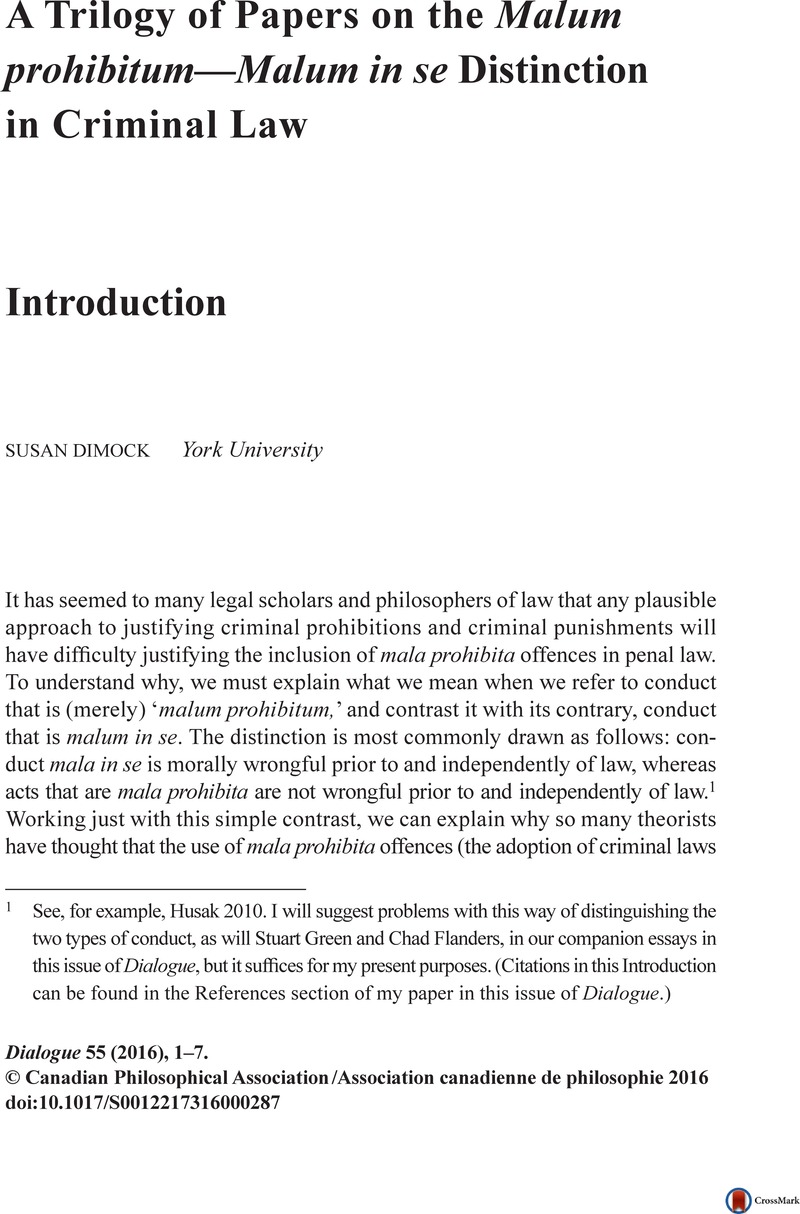Introduction
Published online by Cambridge University Press: 06 June 2016

1 See, for example, Husak 2010. I will suggest problems with this way of distinguishing the two types of conduct, as will Stuart Green and Chad Flanders, in our companion essays in this issue of Dialogue, but it suffices for my present purposes. (Citations in this Introduction can be found in the References section of my paper in this issue of Dialogue.)
2 Both the wrongfulness and desert constraints are ably articulated and defended by Husak 2008. They are also adopted by Simester and von Hirsch 2011, Duff 2007, and Moore 1998/2010.
3 For a very useful discussion of the varieties of legal moralism, and their relation to other principles of criminalization such as the harm principle, see Duff 2007, Chapter 4, and Duff 2014.
4 The only prominent example of a theorist who explicitly eschews the wrongfulness and desert constraints is Tadros in his highly original The Ends of Harm: The Moral Foundations of Criminal Law.
5 See Duff 2007, and Husak 2008.
6 Moore 2009.
7 Duff 2014, 2011, and Duff and Marshall 2010.
8 Husak 2009, 2004.
9 I have drawn the contrast between the political and moral approaches as a starkly binary, either-or choice, but, of course, they are not so sharply separable in the work of philosophers of criminal law. By insisting that only public moral wrong-doing should be criminalized, for example, Duff and Husak both introduce political elements into their predominantly moral approaches. Nonetheless, pre-legal morality remains the normative system that “underlies the criminal law” for these theorists. Husak 2010, p. 2.
10 See Duff 2007 for an overview of his relational theory of responsibility as accountability.
11 Saudi Arabia, Egypt, and Pakistan, for example, continue to put women to death for the crime of adultery.
12 On the relational elements inherent in practices of calling persons to account for their alleged wrongdoings, see Duff 2007.
13 The distinction between the ‘regular part’ or ‘special part’ and the ‘general part’ of criminal law is an important one in criminal law scholarship and practice. Very roughly, the regular part contains all the specific offences recognized in a particular legal jurisdiction, while the general part articulates principles that apply to all or whole classes of crimes (e.g., that being ‘not criminally responsible’ or ‘insane’ is a general defence to any criminal charge; that one must be above some specified age in order to be able to commit any crime at all; and that the Crown (prosecutor) bears the burden of proving the guilt of accused persons beyond a reasonable doubt). It is possible that the general part of some specific criminal code includes a principle that no offence in the special part should be enacted unless the conduct it targets is pre-legally wrong. In other words, the general part of a given penal code might rule out the adoption of any mala prohibita offences in the special part, though I am not aware of any actual code that does so. (Perhaps the Model Penal Code comes the closest to doing so.) See Shute and Simester 2002.
14 Indeed, I even put some of those thoughts in writing: see Dimock 2014.